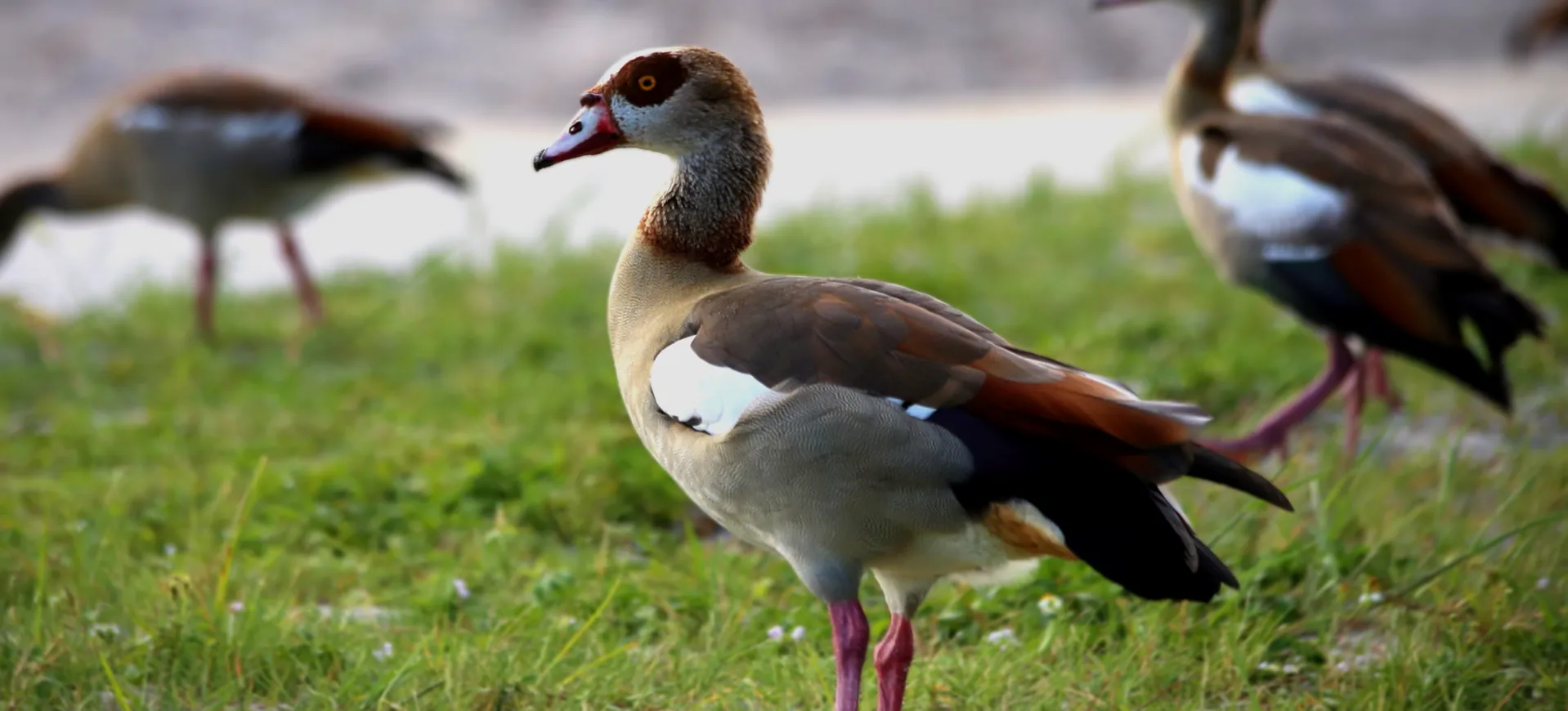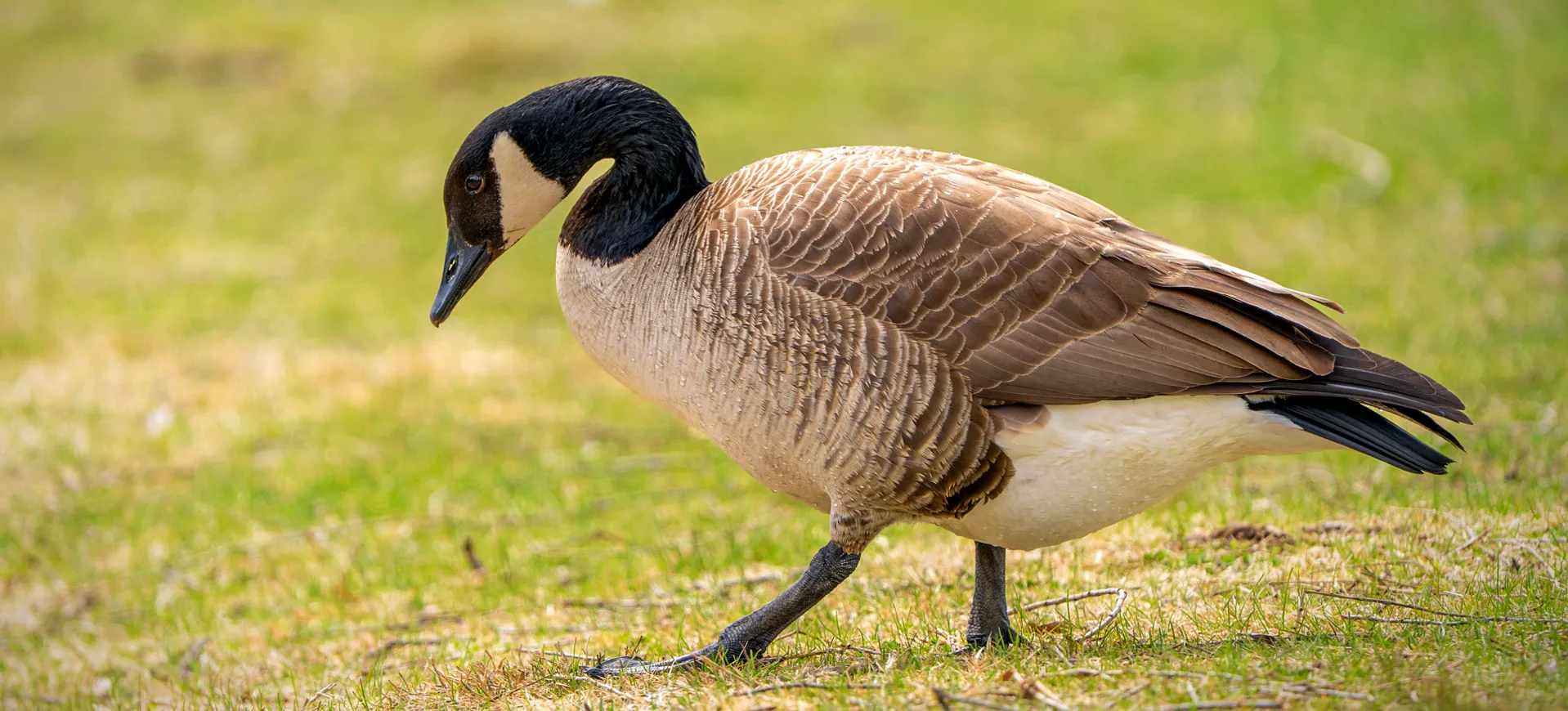Overview
The White-headed Duck is a remarkable waterfowl known for its distinct appearance and peculiar breeding behavior. Its natural habitat spans the wetlands of Spain, North Africa, and central Asia, and its unique physical traits distinguish it from other duck species. It’s a medium-sized diving duck that prefers freshwater habitats like lakes, marshes, and reservoirs with plentiful vegetation. This bird has a characteristic large head, steep forehead, and long, stiff tail, making it unmistakable among other ducks.
Historically, the White-headed Duck’s population has significantly fluctuated due to hunting and habitat destruction. However, efforts for its conservation have helped its population bounce back in certain areas. Unfortunately, hybridization with the introduced Ruddy Duck from North America has seriously threatened its genetic purity, especially in Spain.
Being a diving duck, the White-headed Duck has an interesting feeding habit, which involves spending a lot of time underwater searching for food. Its diet mainly consists of aquatic plants, invertebrates, and occasionally small fish. Mating season is particularly fascinating, with male ducks performing distinct displays to attract females.
Taxonomy
Kingdom
Phylum
Class
Order
Family
Genus
Species
Type
Physical Description:
The White-headed Duck is recognized for its distinct physical appearance that differentiates it from other ducks. Male ducks possess a large blue bill, a white head, and a black cap and neck. They have a chestnut-brown body, black rear, and a long, stiff, spiky tail. On the other hand, the females are slightly duller with a gray-brown body, dark brown cap, cheek patches, and a whitish face. They also have flatter heads compared to the males and a less noticeable tail.
The body shape of the White-headed Duck is also unique, resembling a cork bobbing on the water when it is resting. Its large head, short neck, and long, stiff tail lend it an instead hunched appearance. They have sturdy, well-adapted legs and webbed feet positioned far back on their body, making them excellent swimmers and divers but rendering them awkward on land.

Lifespan: Wild: ~8 Years || Captivity: ~10 Years

Weight: Male: 1.5 lbs (0.68 kg) || Female: 1.3 lbs (0.59 kg)

Length: Male: 17 inches (43 cm) || Female: 15 inches (38 cm)

Wingspan: Male & Female: 25 inches (63.5 cm)

Top Speed: 30 mph (48 km/h)
Characteristic:
Native Habitat:
The White-headed Duck is native to the wetlands of Spain, North Africa, and Central Asia. They prefer calm, freshwater environments like lakes, marshes, and reservoirs with rich vegetation. They are often found in densely vegetated areas, where they can hide from predators and easily access food resources.
The nesting sites are usually located in tall emergent vegetation, floating mats, or islands where they can stay protected from terrestrial predators. During the winter, they will likely move to more extensive, open bodies of water, including brackish lagoons and saline lakes, where food might be more plentiful.
Climate Zones:
Biomes:
Biogeographical Realms:
Countries:
Diet:
Diet & Feeding Habits:
The White-headed Duck is an omnivore with a diet primarily consisting of aquatic plants, seeds, and roots. However, it also feeds on aquatic insects, larvae, mollusks, and occasionally small fish. This diversity in their diet not only provides essential nutrients but also aids in their adaptation to changing seasonal availability of food resources.
Being a diving duck, the White-headed Duck has an interesting feeding behavior. They can dive and stay submerged for one to two minutes, reaching depths up to 10 feet (3 meters). They forage primarily at night, using their broad, flat bill to dig or “dabble” along the bottom of their wetland habitat, looking for food. Their specialized bill has comb-like structures along the edges that filter out water and retain food particles.
Mating Behavior:
Mating Description:
During the breeding season, male White-headed Ducks display an elaborate courtship ritual to attract females. They parade around prospective mates with their tails cocked up, and their bills pointed downward. This behavior is accompanied by a distinct whistling call, which adds to the allure. The breeding season generally starts in April and extends till July.
White-headed Ducks are monogamous and form pair bonds that last for a single breeding season. Females lay an average of 8 eggs, which are incubated for about 25 days. The chicks are precocial, meaning they are well-developed and mobile shortly after hatching, and are led by the mother to feeding areas. However, the mother does not feed the chicks, who learn to dive and forage independently at a very young age.
Reproduction Season:
Birth Type:
Pregnancy Duration:
Female Name:
Male Name:
Baby Name:
Social Structure Description:
White-headed Ducks are solitary outside of the breeding season, although they sometimes form small flocks. During the breeding season, males become territorial and aggressive towards other males. After mating, the male leaves the female to independently incubate the eggs and care for the ducklings. The young ducks become independent after about 50-60 days.
Groups:
Conservation Status:
Population Trend:
According to recent data, the global population of White-headed Ducks is estimated to be between 10,000 and 15,000 individuals. However, the population is fragmented, with the most significant numbers in Spain and Russia. The Spanish population has shown a promising recovery due to practical conservation efforts and legal protection, reaching numbers above 3,000 birds. In contrast, Asian populations have seen more volatile trends with significant decline due to habitat degradation and hunting.
Population Threats:
The White-headed Duck faces numerous threats that have led to its endangered status. Habitat loss due to agriculture, water extraction for irrigation, and construction of dams are significant problems, particularly in Asian populations. Over-hunting and the collection of eggs have also been detrimental.
Another major threat to the White-headed Duck is hybridization with the North American Ruddy Duck, which was introduced in Europe. This species can interbreed with the White-headed Duck, creating hybrid offspring and threatening the genetic integrity of the latter species.
Conservation Efforts:
Conservation efforts for the White-headed Duck have primarily focused on habitat protection, reducing hunting pressure, and controlling the Ruddy Duck population in Europe. In Spain, successful conservation measures have involved creating protected wetland areas, public awareness campaigns, and hunting regulations.
However, the White-headed Duck continues to face significant threats in other parts of its range, and effective conservation measures are urgently needed. The Ramsar Convention, an international treaty for the conservation of wetlands, provides a framework for such efforts. More research is needed to understand the population dynamics and ecology of the species to guide conservation and management strategies.
Additional Resources:
Fun Facts
- The White-headed Duck is one of the world’s stiffest-tailed ducks.
- The male White-headed Duck’s courtship display is a spectacle, with its tail cocked up and bill pointed downwards while whistling.
- Female White-headed Ducks sometimes lay their eggs in the nests of other ducks.
- These ducks are excellent divers and can stay underwater for up to two minutes.
- They can reach depths of up to 10 feet when diving for food.
- Despite being strong swimmers, they are awkward on land due to the placement of their legs far back on the body.
- The Spanish population of White-headed Ducks has recovered due to practical conservation efforts.
- White-headed Ducks are threatened by hybridization with introduced North American Ruddy Ducks in Europe.
- Unlike many ducks, the White-headed Duck prefers to forage primarily at night.
- Young White-headed Ducks are precocial and can dive and forage for food shortly after hatching.















































































